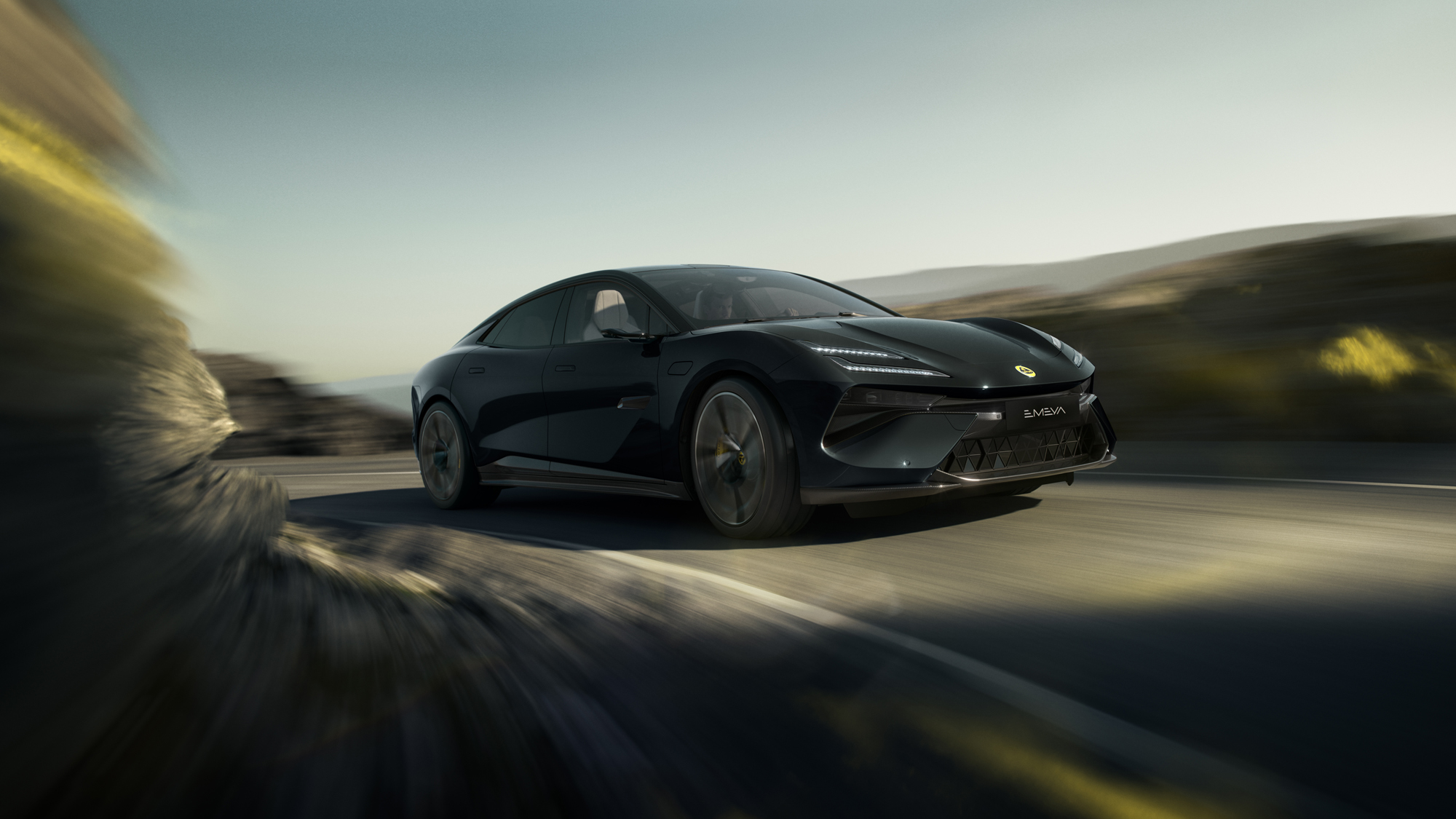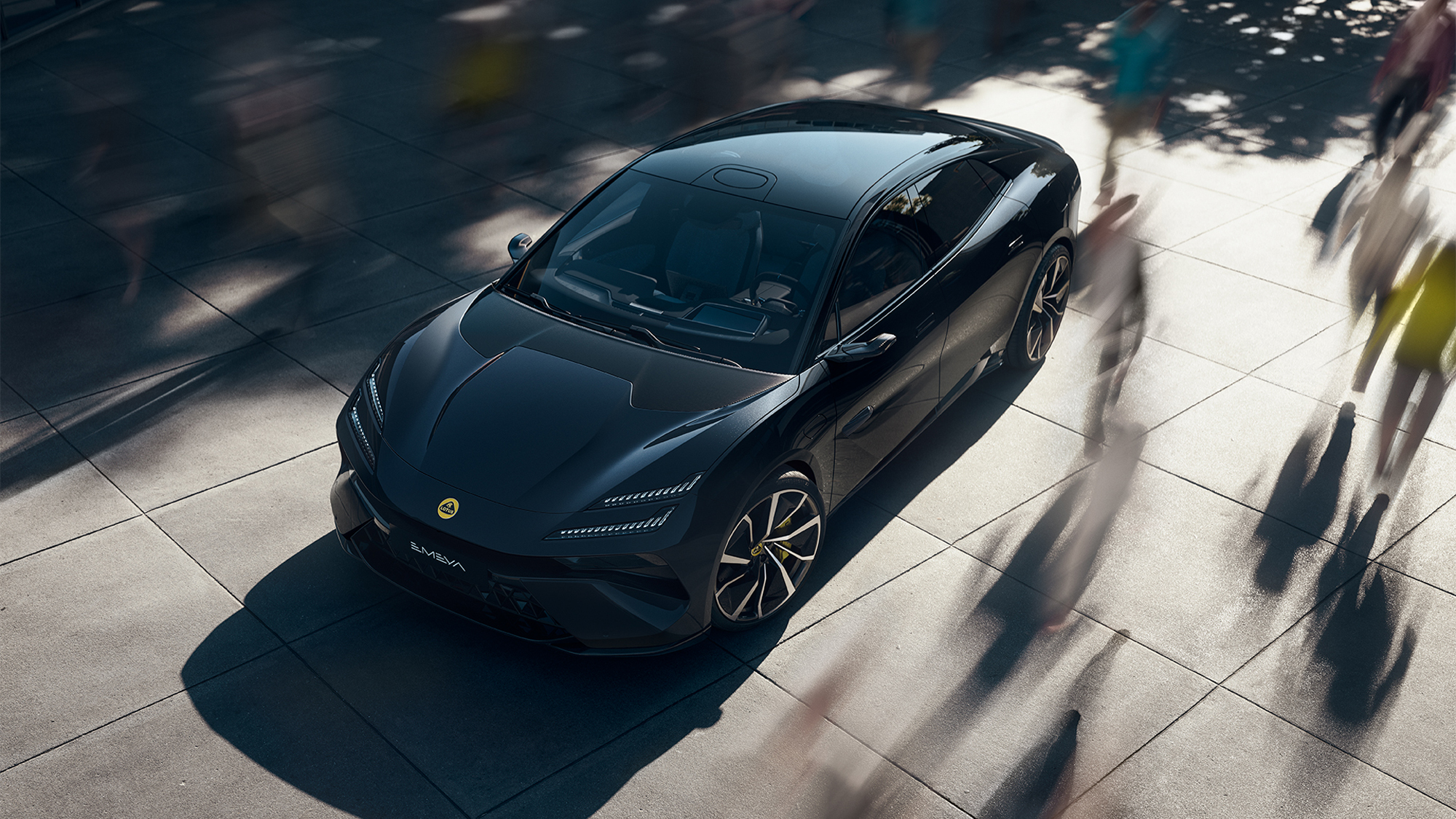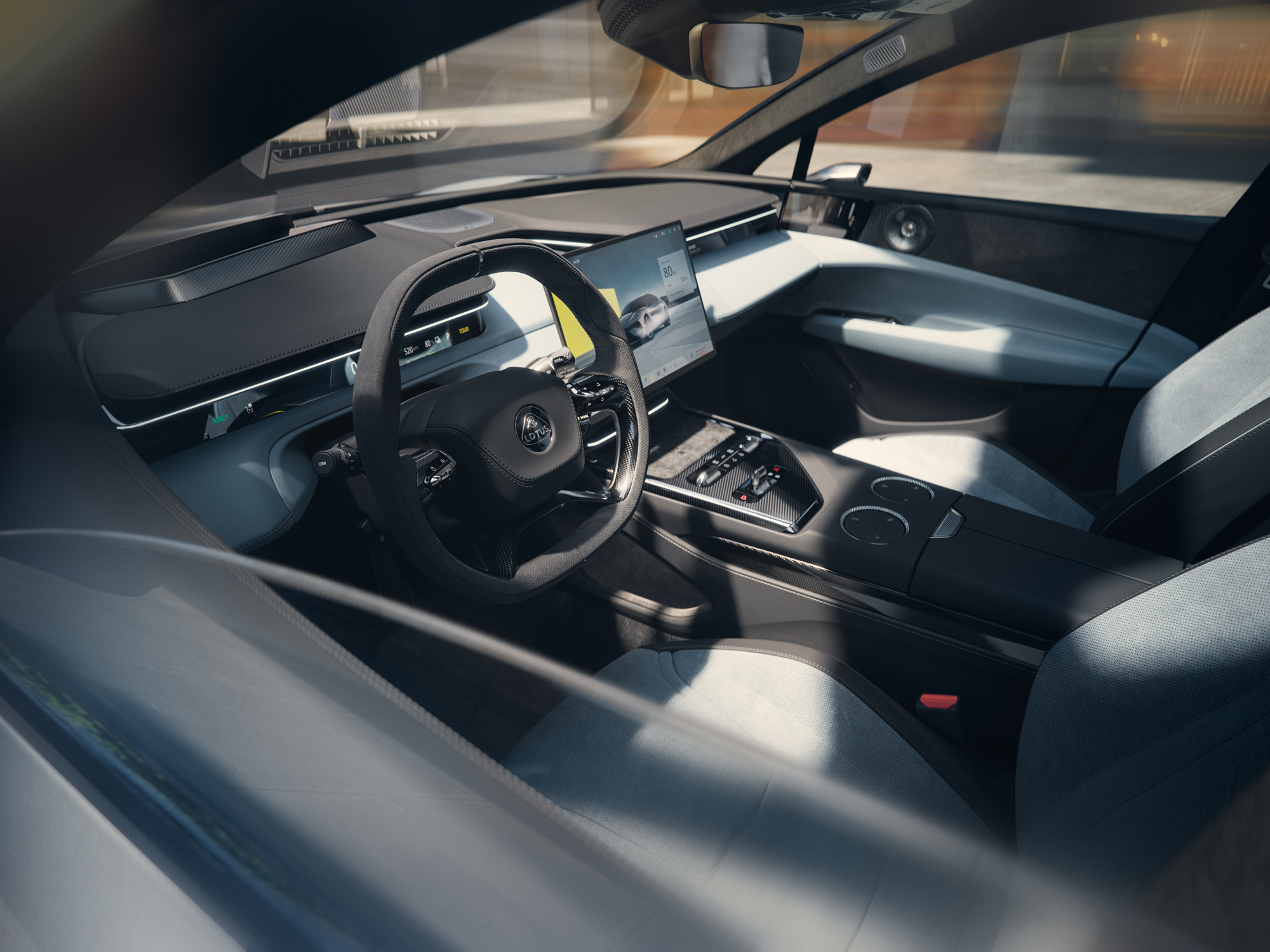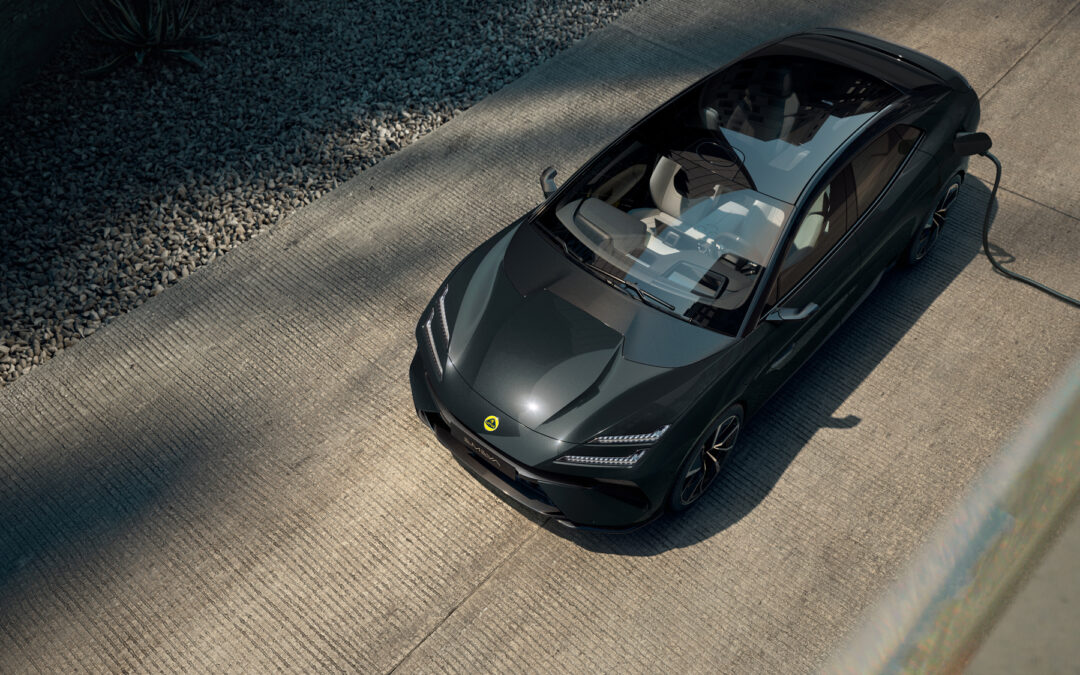The CAR EV 360º Test Lotus Emeya
It may be a long way removed from the lightweight sports cars that usually wear the Lotus badge, but what is the Emeya ‘hyper GT’ like to drive? And how well does it cope being driven down to empty?

Lotus is living through interesting times. After being acquired by China’s Geely, what had once been a maker of lightweight sports cars in Norfolk bet big on an electric future. However, the Eletre SUV and the Emeya coupe-saloon we’re testing here have both missed their sales targets by a mile.
But that doesn’t mean the Lotus rival to the excellent Porsche Taycan super-EV is a bad car – the sales figures are in line with the public’s general lack of enthusiasm for high-priced, high-performing electric cars.
A recent rejig means the Emeya range now consists of the Emeya 600 (previously the Emeya S), with 603bhp, and the Emeya 900 (previously the R), making 905bhp. The 600 comes in a choice of basic, GT, GT SE and Sport SE trims; the 900 is either Sport or Sport Carbon. Here we’re testing the 900 Sport.
Both retain two electric motors and all-wheel drive, with the 900 gaining a two-speed gearbox for the rear drive unit. Acceleration and power figures lag behind Porsche, Tesla and Lucid, although the 900 still manages 0-62mph in 2.8sec and the 600 4.2sec, so you won’t exactly be holding up the traffic.
Unlike an old-school Lotus, the Emeya is about luxury as much as performance. It’s a high-quality car with a feature-packed interior – a far cry from the exposed welds and rubber mats of a Mk1 Elise, and it definitely doesn’t leak when it rains. Time to park those preconceptions and judge the Emeya on its own merits.

A 360º look around the car
Lotus call the Emeya a hyper GT, which translates as a long, wide, relatively low five-door coupe with a hatch rear opening. It has a ‘skateboard’ battery layout, meaning the cells are under the floor, stopping it being as low as a traditional Lotus sports car. It’s significantly longer and taller than the Porsche Taycan, but the Lotus also has more rear seat space. Vast 22- and 23-inch wheels are in proportion with the Emeya’s body, and can make it look more compact than it actually is. But get close and it’s a whopper.
With no combustion engine to house under the bonet, the Emeya’s cabin is pushed forwards to echo the company’s long heritage of mid-engined models, and the wheelbase is long. The sides are elegant and simple, with flush-fitting door handles that only pop out when needed, while the angry-looking front end is more supercar than luxury saloon at first glance. It’s an unusual combination, but very striking – few cars draw quite so many quizzical looks.
Look closely at the Emeya and you start to notice more and more cameras and sensors, all are part of the highly advanced driver assistance system. In motion, a lidar sensor in the roof and one on each front wing pop out.
At the rear there is a big air channel on either side, the route via which air exits the rear wheelarches. It’s a feature that’s reminiscent of the hyper-rare, hyper-expensive Lotus Evija hypercar. Sport versions of the Emeya have active aerodynamics, including a moveable rear wing.
The doors are electrically operated on higher-spec models. Getting them to open automatically from the outside is not as straightforward as you’d hope, but closing them from the inside is simple – just press the brake lever (like on a Rolls-Royce Spectre).
What’s it like to drive?
The 600 version is not slow, but the performance just doesn’t feel that spicy given the vast power output. Traction is good and you certainly get pushed back into your seat, but you’d get more excitement from an MG 4 XPower hot hatch, priced £50k cheaper.
It’s a very different story with our 900. It has a launch mode, enabling you to rocket away from a standstill in dramatic fashion. It’s much more visceral than you might expect from an EV: the rear of the car hunkers down as I’m flung forwards violently, my vision starts to go a little funny and my brain struggles to keep up. Bear in mind that launch control only works when the traction control is deactivated, so there’s scope for it stepping out of line in a way you wouldn’t get in normal driving.
Where alternatives such as the Tesla Model S, Lucid Air and Porsche Taycan control their vast outputs quite precisely, the Emeya 900 feels that bit more raw. You know all about it when the two-speed transmission on the back axle changes gears.
Unlike an old-school Lotus, the Emeya is about luxury as much as performance
In the corners, the 900’s air suspension, adaptive dampers, active roll control and four-wheel steering combine to keep the car level, and make it unusually agile for such a big car, but it never shrugs off its weight. By contrast, the Taycan feels hundreds of kilos lighter than it really is. In the Lotus, you’re more aware of the forces in play and how hard the Emeya is working to offset them.
As you exit a corner it sometimes feels that it’s struggling to get the back axle to cope with all that power, in a way you don’t experience in the Taycan. If you’re so inclined, the Taycan is also more willing to sustain a slide.
There’s a much higher level of electronic interference than you’d traditionally get in a Lotus, but I’m pleased to report that the steering has reassuring weight and offers some degree of feedback from the road. Brake feel is also more natural than the Taycan’s, with regen levels easily adjusted by a paddle on the Emeya’s steering wheel.
Comfort levels are good. The 900 is a touch firmer in its set-up than the 600, but that feels appropriate for a car with so much power. That said, a Taycan equipped with active suspension magically makes most bumps disappear and remains the benchmark in this class.
How practical is it to live with?
Very. There’s a choice of four-seat or five-seat layout, both of them roomy. The Emeya is a big car with a long wheelbase and a not particularly low roof, so interior space is more akin to a Mercedes EQS or BMW i7 saloon than a coupe like the Taycan or Audi e-Tron GT.
Rear legroom is sufficient for a six-footer to stretch out, and there’s good headroom. The four-seat version involves electrically adjustable individual rear seats with a big centre console. If you have small children, the four- and five-seat versions are both more than capable of accommodating a rear-facing Isofix seat without any other occupant having to compromise their seating position.
The boot capacity is 509 litres, and its shape is quite shallow. The big hatch opening makes access very easy. Five-seat models let you fold down the rear bench, taking total capacity up to 1388 litres. There’s a 34-litre front boot, ideal for keeping your dirty charging cables away from the plush interior.
You do need to watch out for the width – it’s not going to make life easy in certain multi-storey car parks, for instance.

Any cool tech?
Loads. If you’ve poked around an Eletre SUV it’ll be familiar. If not it’ll be quite a surprise considering this car wears a Lotus badge. It looks and feels every inch the high-tech luxury product it aims to be, easily beating the EQS for quality and the i7 for flash.
A 15.1-inch touchscreen dominates the upholstered dash with its 3D graphics, its quick responses and a generally classy look. The menus take a while to get used to, although the welcome presence of some physical switchgear means you’re dealing with the screen less than in some rivals.
The driver’s instrument display is a thin strip, designed to reduce distraction, augmented by a head-up display that can be configured to show a variety of information. Everything feels bespoke, indicating Geely’s massive investment here. Could you imagine a Lotus coming with massaging seats and an electrically dimming panoramic roof even five years ago? Me neither.
The suite of sensors for the assisted driving tech is quite something. In total, there are four deployable lidar sensors, 13 cameras and 18 radar sensors that allow the Emeya to ‘see’ in any weather. It’s been equipped with future legislation in mind: when local regulations permit, an over-the-air update could increase your Emeya’s level of autonomous driving ability.
Meanwhile, in the here and now, the Emeya has charging tech that beats both Porsche and Kia for speed. Find a charger that outputs 400kW and you’ll get your battery from 10 per cent to 80 per cent full in a mere 14 minutes, which goes a long way to making up for the 900’s thirst for amps.
Running the Lotus Emeya 900 to empty
Most EV drivers recharge well before their ‘charge remaining’ indicator gets to zero, but it’s useful to know what to expect if you do find yourself running very low.
In the Emeya, my first warning comes with 20 per cent charge still remaining, while I’m enjoying the car’s handling on some twisty roads and making good use of the clever chassis technology. At this point the driver’s display flashes a message telling me there is active roll control degradation due to the low charge level. As I come out of the corner and straighten up, the message disappears.
It’s soon replaced by a ‘battery low’ warning at 19 per cent remaining, although that disappears after about five seconds. The battery charge indicator’s new yellow hue is a lingering reminder my low battery level.
There are no more ‘battery low’ warnings – nothing at 15 per cent, 10 per cent or even one per cent – and none of the cacophony of alerts you get in other cars. But the car is still, more subtly, making sure you’re aware. The range estimate has turned to dashes, and at around five per cent it’s clear that the available power has dropped off substantially, and there’s a further drop by the time I hit zero per cent, although the Emeya still scoots up to 40mph easily enough.
During my time with the 900, I average just shy of 2.5 miles per kWh, good for almost 250 miles of range. Gentler driving on slower roads would improve this figure, but getting near 300 miles would be hard.

Verdict
The Emeya is a great car if you don’t view it through a Lotus-tinted filter. Ignore the badge and this is a fine luxury car that feels different and a bit special inside while offering plenty of room for people or cargo.
What it isn’t, despite what Lotus might claim, is a thrill-a-minute driver’s car. The best versions of the rival Porsche Taycan offer a phenomenal, physics-defying blend of ride and handling.
You never get that sense of magic in the Emeya; rather, it’s an incredibly capable car. Nor do you get the sense of playfulness or involvement, with the ever-present electronic safety net preventing any exuberant displays. With that in mind, I’d be inclined to recommend the softer-riding and far cheaper 600 over the more powerful 900. Your 600 will need GT SE trim for the full luxury effect.
Seen as a luxury car and not a sports saloon, the Emeya is a far better option than the Mercedes EQS, although it’s a tougher call against the BMW i7. The big German is more spacious, comfier and available with even more toys, but the Emeya feels that bit more special.
Facts & Figures | Lotus Emeya
What’s the line-up?
The 600 and more powerful 900 versions of the Emeya both use the same 102kWh battery. The 600 is able to cover up to 379 miles on a charge, according to the official WLTP figures, while the 900 scrapes just 301. Even the most basic 600 still gets tonnes of equipment, but go for the Sport SE version to get all the clever handling hardware that’s standard on the 900 Sport. The 900 Sport Carbon range-topper adds luxury, and more carbonfibre.
Data
Price £129,990 (900 Sport)
Powertrain 102kWh battery (gross), two e-motors, all-wheel drive
Performance 905bhp, 727Ib ft, 2.8sec 0-62mph, 159mph
Weight 2650kg
Efficiency 3.04 miles per kWh (official), 2.5 miles per kWh (tested), 301-mile range (official), 250 miles (tested), 0g/km CO2
Length/width/height 5139/2123/1459mm
Boot capacity 509 litres plus 34-litre frunk

